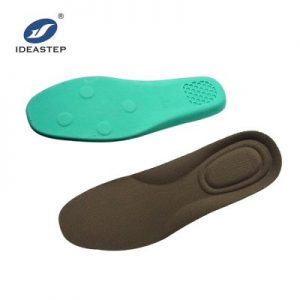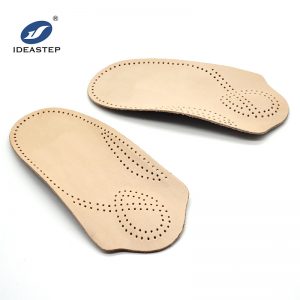
Orthotic insoles, whether full or half, can provide several advantages and disadvantages. Here are some of the key points to consider:
Advantages of Orthotic Full Insoles:
- Enhanced Support: Full-length orthotic insoles cover the entire length of your foot, providing comprehensive support to the arches, heels, and the entire foot structure.
- Increased Stability: Full insoles help distribute body weight evenly across the foot. Reducing pressure points and offering greater stability while standing, walking, or running.
- Improved Shock Absorption: These insoles often have cushioning properties that absorb shock, minimizing the impact on joints, such as ankles, knees, and hips.
- Balance Correction: Full insoles can correct imbalances in the foot alignment. Helping to alleviate issues like overpronation (inward rolling) or supination (outward rolling).
- Pain Relief: By promoting proper foot alignment and reducing strain on muscles and ligaments. Full orthotic insoles can alleviate foot pain, plantar fasciitis, and conditions like shin splints.
Disadvantages of Orthotic Full Insoles:
- Footwear Compatibility: Full insoles may not fit well in certain types of shoes. Particularly those with low-profile designs or tight-fitting footwear like high heels or dress shoes.
- Limited Space: The extra material of full insoles can occupy considerable space within the shoe. Potentially making them less suitable for individuals with narrow feet or those requiring extra room.
- Adaptation Period: It may take time for your feet to adapt to full insoles, especially if you’re not used to wearing supportive inserts. Some discomfort or adjustment period might be experienced initially.
Related product links: https://www.aideastep.com/product/orthotic-insoles-thick-latex/.

Advantages of Orthotic Half Insoles:
- Versatility: Half-insoles are typically smaller and more flexible, allowing them to fit into a wider range of footwear. Including flats, dress shoes, and sandals.
- Toe Space: Half insoles leave the toe area free, providing more room for movement and reducing potential crowding or discomfort.
- Easier Adjustment: Since half-insoles cover less surface area. They tend to have a shorter adaptation period, making them more comfortable right from the start.
- Improved Balance and Arch Support: Even though they don’t provide support to the entire foot, half insoles can still offer significant benefits by supporting the arches and providing better stability.
Disadvantages of Orthotic Half Insoles:
- Limited Coverage: Half insoles may not address as many foot-related issues as full insoles since they primarily focus on arch support. Conditions requiring heel or forefoot cushioning may not benefit as much.
- Reduced Shock Absorption: Compared to full insoles, half insoles may have less shock-absorbing capacity due to their smaller size and reduced material.
- Insufficient Correction: Some individuals with severe foot alignment issues or specific conditions might require comprehensive correction provided by full insoles rather than just partial support.
Ultimately, the choice between orthotic full and half insoles depends on your specific needs, foot structure, footwear preferences, and any existing foot-related problems. It’s advisable to consult with a healthcare professional or podiatrist who can assess your situation and recommend the most suitable option for you.
Related product links: https://www.aideastep.com/ideastep-wholesale-orthotic-heels-factory-for-shoemaker/.
